|
The Museum of Coffee
Not knowing anything about coffee, only that we have a tiny jar
of Gold Blend on board for visitors, and as neither of us can break our
huge tea habit we went to the Coffee Museum to spend a pleasant time learning,
sniffing and tasting. Coffee is a beverage prepared from
roasted coffee beans. Due to its
caffeine content, coffee has a stimulating effect in
humans. Today, coffee is one of the most popular beverages
worldwide.
 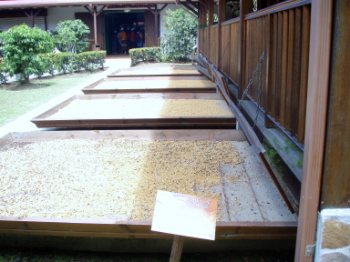 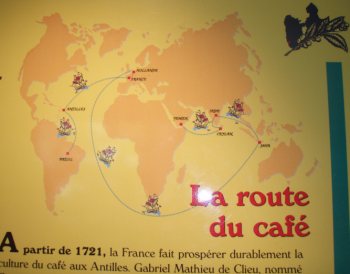
The museum is on the west coast just north
of Vieux Habitants. The drying racks. The route that coffee growing
took.
Origins: The word "coffee" entered the English language in 1598 via
Italian poki. This word was created via the Turkish kahve, which in turn came
into being via Arabic qahwa, a truncation
of qahhwat al-bun or “wine of the bean“. Islam prohibits the use of alcohol as a beverage, and
coffee provided a suitable alternative to wine. There are several legendary
accounts of the origin of the drink itself. One account involves the Yemenite
Sufi mystic Shaikh ash-Shadhili. When travelling in Ethiopia, the legend goes,
he observed goats of unusual vitality, and, upon trying the berries that the
goats had been eating, experienced the same vitality. A similar myth attributes
the discovery of coffee to an Ethiopian goat herder named Kaldi and the Legend
of the Dancing Goats. One possible origin of both the beverage and the name is
the Kingdom of Kaffa in Ethiopia, where the coffee plant originated (its name
there is bunn or bunna).
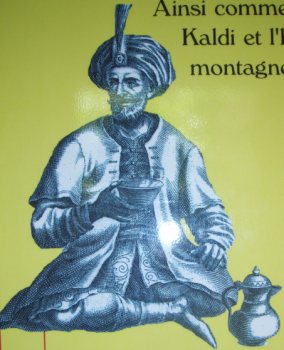
Kaldi
Coffee berries, which contain the coffee bean, are produced by
several species of small evergreen bush of the genus Coffea. The two most commonly grown species are Coffea
canephora (also known as Coffea robusta)
and Coffea arabica. Once ripe, coffee berries are
picked, processed, and dried. The seeds are then roasted, undergoing several
physical and chemical changes. They are roasted to varying degrees, depending on
the desired flavour. They are then ground and brewed to create coffee. Coffee is an important export
commodity, in 2004 it was the top agricultural export for twelve countries and
in 2005 it was the world's seventh-largest legal agricultural export by value.
Some controversy is associated with coffee cultivation and its impact on the
environment. Many studies have examined the relationship between coffee
consumption and certain medical conditions; whether the overall effects of
coffee are positive or negative is still disputed.
 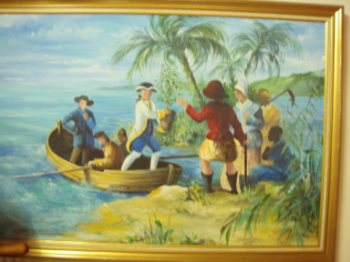 
A portrait of Captain Gabriel Mathieu de
Clieu, a painting of him landing with his precious
charge and a representation of him in uniform.
Arriving in Guadeloupe: The French
were eager to enter the coffee trade. They purchased seeds and trees and shipped
them to the Island of Reunion. The seeds failed to grow and all but one tree
eventually died. Fifteen thousand seeds from that one tree were planted in 1720
and a plantation was finally established. The French also hoped to establish
plantations in the Caribbean but their first two attempts failed.
Captain
Gabriel Mathieu de Clieu, a French Naval Officer on leave in Paris, managed to
obtain a descendant of a coffee tree given to King Louis XIV of France by the
Mayor of Amsterdam in 1714. De Clieu made it his personal mission to take the
tree to his estate on Martinique. He placed his precious plant in a box partly
made of glass so that the tree could absorb sunlight and remains warm on cloudy
days, explains the "All about Coffee". The tree survived a jealous passenger’s
attempt to wrest it from de Clieu, an encounter with Tunisian pirates, a violent
storm, and even worse a shortage of fresh water, it is said he gave much of his
own water to his little plant. De Clieu wrote: ‘Water was lacking to such an
extent that for more than a month, I was obliged to share my scanty ration with
the plant upon which my happiest hopes were founded and which was the source of
my delight.’ De Clieu’s charge arrived in Martinique in good health, and it
thrived and multiplied in the tropical environment. Gordon Wrigley in his book
Coffee states: ‘From this single plant, Martinique supplied seed directly
and indirectly to Guadeloupe and all countries of the Americas except Brazil,
French Guiana, and Suriname’.
The book "All about Coffee" calls it ‘the most romantic chapter in the
history of the coffee plant’. According to the journal Scientific
American that man’s devotion to a sapling coffee tree played a major role in
seeding today’s $70 billion a year coffee industry, which is surpassed only by
petroleum in terms of dollars traded globally. Today over 25 million
family farms in some 80 countries grow an estimated 15 billion coffee trees.
Their product ends up in 2.25 billion cups of coffee that are consumed each
day.
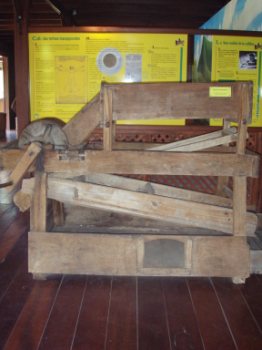 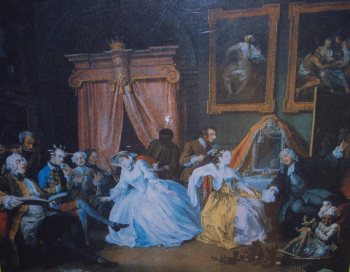 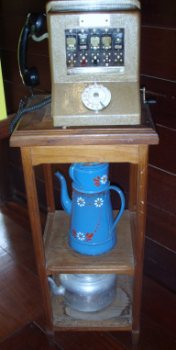
Hand husker, Painting by W. Hogart
(1697-1764) showing the drinking of coffee. Every good
office should have one.
Biology: The Coffea plant is native to subtropical
Africa and southern Asia. It belongs to a genus of ten species of flowering
plants of the family
Rubiaceae. It is an
evergreen shrub or small tree that may
grow 5 metres tall when unpruned. The leaves are dark green and glossy, usually
100–150 millimetres long and 60 millimetres wide. It produces clusters of
fragrant white flowers that bloom simultaneously. The fruit berry is oval, about
15 millimetres long, green when immature, ripens to yellow, then crimson,
becoming black on drying. Each berry usually contains two seeds, but 5–10% of
the berries have only one; these are called peaberries. Berries ripen in seven to nine
months.
 

A standard size sack of coffee beans, the bean itself and an old
tamper.
Cultivation: Coffee is usually propagated by seeds. The
traditional method of planting coffee is to put twenty seeds in each hole at the
beginning of the rainy season; half are eliminated naturally. Coffee is often
intercropped with food crops, such as corn, beans, or rice, during the first few
years of cultivation. Arabica coffee is considered more suitable
for drinking than robusta coffee; robusta tends to be bitter and have less
flavour than arabica. For this reason, about three-quarters of coffee cultivated
worldwide is Coffee arabica. However, Coffee canephora is less susceptible to
disease and can be cultivated in environments where Coffee arabica will not thrive. Robusta coffee
also contains about 40–50% more caffeine than arabica. For this reason, it is
used as an inexpensive substitute for arabica in many commercial coffee blends.
Good quality robustas are used in some espresso blends to provide a better foam head and to lower the
ingredient cost. Other cultivated species include Coffea liberica and Coffea
esliaca, believed to be indigenous to Liberia and southern Sudan, respectively. Most arabica coffee beans originate from
either Latin America, eastern Africa, Arabia, or Asia.
Robusta coffee beans are grown in western and central
Africa, throughout southeast
Asia, and to some extent in Brazil. Beans from
different countries or regions usually have distinctive characteristics such as
flavour, aroma, body, and acidity. These
taste characteristics are dependent not only on the coffee's growing region, but
also on genetic subspecies (varietals) and processing. Varietals are generally known by the
region in which they are grown, such as Colombian, Java or
Kona.

Production: The top ten coffee producers are as follows by
tonnes (data from 2008) and bags (data from 2007): Brazil 17,000,000 / 36,070.
Vietnam 15,580,000 / 18,000. Columbia 9,400,000 / 12,400. Indonesia 2,770,554 /
6,446. Ethiopia 1,705,446 / 5,733. Mexico 962,000 / 4,500. India 954,000 /
4,367. Peru 677,000 / 4,250. Guatemala 568,000 / 4,000 and Honduras 370,000 /
3,833. The world totals stand at 7,742,675 tonnes / 118,920 bags
Ecological effects: Originally, coffee farming was done in
the shade of trees, which provided
habitat for many animals and insects. This method is commonly referred to as the
traditional shaded method. Many farmers have decided to switch their production
method to sun cultivation, a method in which coffee is grown in rows under full
sun with little or no forest canopy. This causes berries to ripen more rapidly
and bushes to produce higher yields, but requires the clearing of trees and
increased use of fertilizer and pesticides. When compared to the sun cultivation
method, traditional coffee production causes berries to ripen more slowly and
produce lower yields, but the quality of the coffee is allegedly superior. In
addition, the traditional shaded method is environmentally friendly and serves
as a habitat for many species. Opponents of sun cultivation say environmental
problems such as deforestation, pesticide pollution, habitat
destruction, soil and water degradation are
the side effects of these practices. The American Birding
Association has led a campaign for
"shade-grown" and organic
coffees, which it says are sustainably harvested.
However, while certain types of shaded coffee cultivation systems show greater
biodiversity than full-sun systems, they still compare poorly to native forest
in terms of habitat value. Another issue concerning coffee is its use of
water. According to New
Scientist, it takes about 140 litres of
water to grow the coffee beans needed to produce one cup of coffee, and the
coffee is often grown in countries where there is a water shortage, such as
Ethiopia, where it a the national drink.
 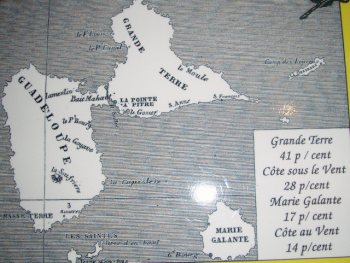 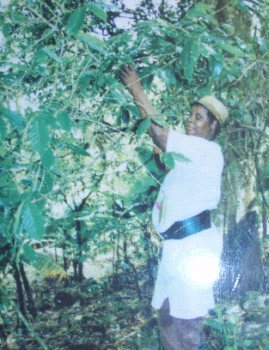
The workers collecting sack, coffee grown on
Guadeloupe, a worker.
Economics: Brazil remains the largest coffee exporting nation, but in
recent years, Vietnam has become a major
producer of robusta beans. Indonesia is the third-largest exporter and the largest producer
of washed arabica coffee. Robusta coffees, traded in London at much lower prices
than New York's arabica, are preferred by large industrial clients, such as
multinational roasters and instant coffee producers because of the lower
cost.
Coffee as a commodity: Coffee is also bought and sold by
roasters, investors and price speculators as a tradable commodity. Coffee
futures contracts for Grade 3 washed arabicas are
traded on the New York Mercantile Exchange (NYMEX) under ticker symbol KT, with contract
deliveries occurring every year in March, May, July, September, and December.
Higher and lower grade arabica coffees are sold through other channels. Futures
contracts for robusta coffee are traded on the London Liffe exchange and, since
2007, on the New York ICE exchange.
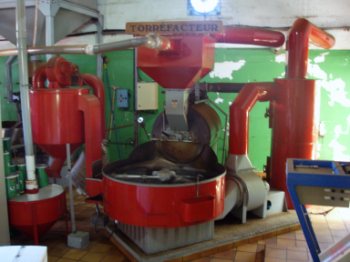 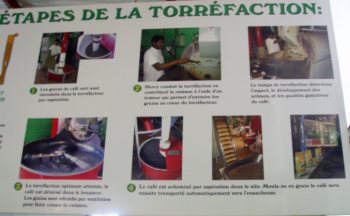 
The heat and aroma watching the final process was awesome. This machine finishes the roasting, shoots the beans into a
hopper, grinds them to go for bagging.
Roasting
Coffee berries and their seeds undergo several processes before
they become the familiar roasted coffee. First, coffee berries are picked,
generally by hand. Then they are sorted by ripeness and colour and the
flesh of the berry is removed, usually by machine,
and the seeds - usually called beans - are fermented to remove the slimy layer
of mucilage still present on the bean. When
the fermentation is finished, the beans are
washed with large quantities of fresh water to remove the fermentation residue,
which generates massive amounts of highly polluted coffee
wastewater. Finally, the seeds are dried;
the best, but least utilized method of drying coffee is by using drying tables.
In this method the pulped and fermented coffee is spread thinly on raised beds,
which allows the air to pass on all sides of the coffee. The coffee is then
mixed by hand. and the drying that takes place is more uniform, and fermentation
is less likely. Most coffee from Africa is dried in this manner and certain
coffee farms around the world are starting to utilize this traditional method as
well. Next, the coffee is sorted, and labeled as green coffee. Another way to
let the coffee beans dry is to let them sit on a cement patio and rake over them
in the sunlight. Some companies use cylinders to pump in heated air to dry the
coffee beans, though this is generally in places where the humidity is too high
to correctly get the moisture out.

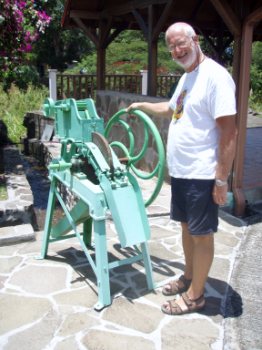 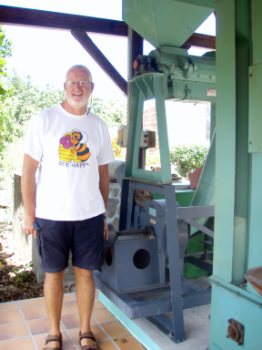
The next step in the process is the roasting of the green
coffee. Coffee is usually sold in a roasted state, and all coffee is roasted
before it is consumed. It can be sold roasted by the supplier, or it can be home
roasted. The roasting process influences the taste of the beverage by changing the
coffee bean both physically and chemically. The bean decreases in weight as
moisture is lost and increases in volume, causing it to become less dense. The
density of the bean also influences the strength of the coffee and requirements
for packaging. The actual roasting begins when the temperature inside the bean
reaches 200°C, though different varieties of
beans differ in moisture and density and therefore roast at different rates.
During roasting, caramelisation occurs as intense
heat breaks down starches in the bean,
changing them to simple sugars that begin to brown,
changing the colour of the bean. Sucrose is rapidly lost during the roasting
process and may disappear entirely in darker roasts. During roasting, aromatic
oils, acids, and caffeine weaken, changing the flavour; at 205°C, other oils
start to develop. One of these oils is caffeol, created at about 200°C, which is
largely responsible for coffee's aroma and flavour.
Depending on the colour of the roasted beans as perceived by
the human eye, they will be labeled as light, medium light, medium, medium dark,
dark, or very dark. A more accurate method of discerning the degree of roast
involves measuring the reflected light from roasted beans illuminated with a
light source in the near infrared spectrum. This elaborate light meter uses a process
known as spectroscopy to return a number
that consistently indicates the roasted coffee’s relative degree of roast or
flavour development. Such devices are routinely used for quality assurance by
coffee-roasting businesses.
Darker roasts are generally smoother, because they have less
fibre content and a more sugary flavour. Lighter roasts have more caffeine,
resulting in a slight bitterness, and a stronger flavour from aromatic oils and
acids otherwise destroyed by longer roasting times. A small amount of chaff is
produced during roasting from the skin left on the bean after processing. Chaff
is usually removed from the beans by air movement, though a small amount is
added to dark roast coffees to soak up oils on the beans.
Decaffeination may also be part of the
processing that coffee seeds undergo. Seeds are decaffeinated when they are
still green. Many methods can remove caffeine from coffee, but all involve
either soaking beans in hot water or steaming them, then using a
solvent to dissolve caffeine-containing oils.
Decaffeination is often done by processing companies, and the extracted caffeine
is usually sold to the pharmaceutical industry.
Storage: Once roasted, coffee beans must be stored properly
to preserve the fresh taste of the bean. Ideally, the container must be airtight
and kept cool. In order of importance, air, moisture, heat, and light are the
environmental factors responsible for deteriorating flavour in coffee beans.
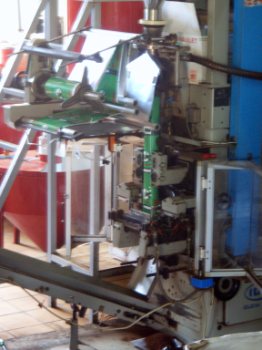 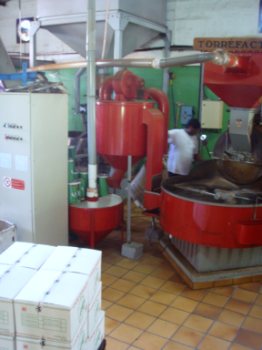 
The green bags used by the museum,
sold in their shop arrive on rolls. The machine can go from bagging ground coffee to beans on the press of a button. The bags are boxed for shipment.
Folded-over bags, a common way consumers often purchase coffee,
are generally not ideal for long-term storage because they allow air to enter. A
better package contains a one-way valve, which prevents air from entering.
Preparation: Coffee beans must be ground and
brewed in order to create a beverage. Grinding the
roasted coffee beans is done at a roastery, in a grocery store, or in the home.
They are most commonly ground at a roastery and then packaged and sold to the
consumer, though "whole bean" coffee can be ground at home. Coffee beans may be
ground in several ways. A burr mill uses revolving elements to shear the bean; an electric
grinder smashes the beans with blunt blades moving at high speed; and a mortar
and pestle crushes the beans.
The type of grind is often named after the brewing method for
which it is generally used. Turkish grind is the finest grind, while coffee percolator or French
press are the coarsest grinds. The most common grinds are
between the extremes; a medium grind is used in most common home coffee brewing
machines. Coffee may be brewed by several methods: boiled, steeped, or
pressured. Brewing coffee by boiling was the earliest method, and Turkish
coffee is an example of this method. It is prepared
by powdering the beans with a mortar and pestle, then adding the powder to water and bringing it to a
boil in a pot called a cezve or, in Greek, a
briki. This produces a strong coffee with a layer of foam on the
surface.
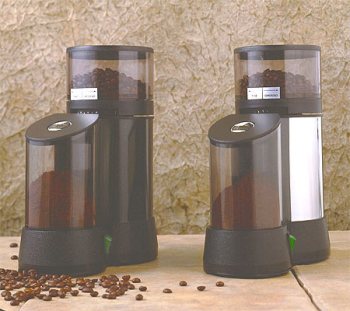   
Machines such as percolators or automatic
coffeemakers brew coffee by gravity. In an automatic coffeemaker,
hot water drips onto coffee grounds held in a coffee
filter made of paper or perforated metal, allowing
the water to seep through the ground coffee while absorbing its oils and
essences. Gravity causes the liquid to pass into a carafe or pot while the used
coffee grounds are retained in the filter. In
a percolator, boiling water is forced into a chamber above a filter by steam
pressure created by boiling. The water then passes downward through the grounds
due to gravity, repeating the process until shut off by an internal timer or,
more commonly, a thermostat that turns off the heater when the entire pot
reaches a certain temperature. This thermostat also serves to keep the coffee
warm (it turns on when the pot cools), but requires the removal of the basket
holding the grounds after the initial brewing to avoid additional brewing as the
pot reheats. Purists do not feel that this repeated boiling is conducive to
achieving the best-flavoured coffee. There is a measuring convention adopted for
automatic coffeemakers, that is unique to coffee preparation, namely, using
"cup" to mean 6 ounces instead of 8 ounces of fluid. The increments labeled on
the pot and water reservoir of an automatic coffeemaker usually correspond to
this convention. This is because, typically, one uses about 1 rounded tablespoon
of ground coffee per 6 ounces of water.
Coffee may also be brewed by steeping in a device such as a
French press (also known as a cafetière or
coffee press). Ground coffee and hot water are combined in a coffee press and
left to brew for a few minutes. A plunger is then depressed to separate the
coffee grounds, which remain at the bottom of the container. Because the coffee
grounds are in direct contact with the water, all the coffee oils remain in the
beverage, making it stronger and leaving more sediment than in coffee made by an
automatic coffee machine.
The espresso method forces hot (but not
boiling) pressurized water through ground coffee. As a result of brewing under
high pressure, the espresso beverage is more concentrated (as much as 10 to 15
times the amount of coffee to water as gravity-brewing methods can produce) and
has a more complex physical and chemical constitution. A well-prepared espresso
has a reddish-brown foam called crema that floats on the surface. The drink
"Americano" is popularly thought to have
been named after American soldiers in WW II who found the European way of drinking espresso too
strong; baristas would cut the espresso with hot water for them.

While we were sipping the local brew, Bear leapt up and led me to
this rather attractive chap, marching at quite a
pace, I particularly like his aerial on his bottom. Then he saw a slightly
bloated one floating on top of the decorative water feature. He rescued it and
realising it was still alive, gently put it in the hedge amongst the leaves,
stabbing his forehead on a thorn along the way, bleeding my St Francis returned
triumphant.
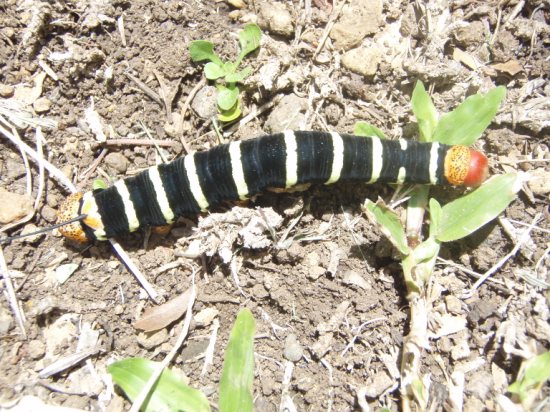 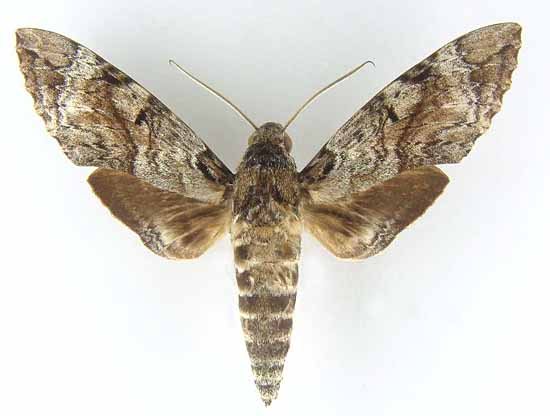
As we left the museum I looked at Bear and said " I bet you that our
fancy caterpillar friend grows up to be big, brown and furry", not dissimilar to
the person I was looking at !!!!! I checked later on line and indeed I guessed
correctly. He grows up to be the Tetrio Sphinx Moth.
Apparently our friends do huge damage to crops and cost a small
fortune.

ALL IN ALL an interesting
look at something we have always taken for granted in lovely surroundings.
A well laid out and informative look at coffee, in a
well laid out little museum in a quiet, gentle back
water.
|


































